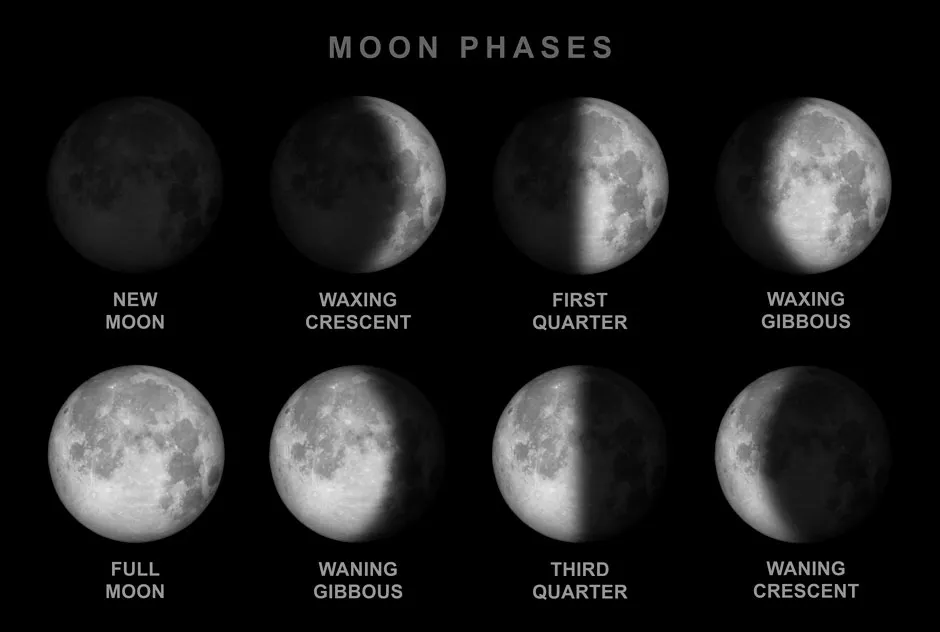Here’s something to howl about: the first full Moon of 2021 is here. Well, sort of. While technically 'full' on Thursday 28 January, the moon will still appear whole to the naked eye until Monday 31 January.
Known as the ‘Wolf Moon’, it’s one of the 12 full Moons occurring this year.But when exactly can you see it? Why does it carry that (extremely cool) name? And how can you take the best photo of it? Glad you asked: we’ve answered all those questions and more below.
Plus, if you’re looking for more stargazing tips, be sure to check out our full Moon UK calendar and astronomy for beginners guide.
Don’t say we do nothing for you.
When is the Wolf Moon 2021?
The Wolf Moon can be seen from Thursday 28 January 2021 in the UK (and the rest of the world).
Technically, the moon is only ‘full’ – reflecting the maximum amount of sunlight onto Earth – for only a short period. This happens when Earth comes exactly between the Moon and The Sun, a moment known as ‘syzygy’.
In the UK, this will happen at 7.16pm on 28 January. However, to the naked eye, the moon will appear full for another two to three nights.
Why is it called a Wolf Moon?
There's no overall consensus, but many sources say the full Moon takes its name from howling hungry wolves.
As Prof Bill Leatherbarrow, director of the British Astronomical Association's Lunar Section says: "There is always uncertainty surrounding popular historical names for full moons, but it is my understanding that the generally accepted explanation for the January Wolf Moon is that it represents the howling of wolves at the lack of food in midwinter."
Others say that the full Moon moniker specifically originates from Native American culture, who used the lunar cycle as a method of timekeeping.
According to theOld Farmer's Almanac, several tribes named the January’s full Moon as the ‘Wolf Moon’ after the wolf howls believed to be caused by a scarcity of food during this winter period.
However, as Dr Das Baskill, Physics and Astronomy lecturer at the University of Sussex, points out, it's possible the name may have also originated in Europe.
"I can imagine both Native Americans and Europeans calling it the Wolf Moon independently in ancient times – wolves only became extinct in the UK around 500 years ago," he said.
Interestingly, the January full Moon also has plenty of other names: Mnido Giizis, the Spirit Moon, the Goose Moon and the Ice Moon.
Anglo-Saxons also named the January Moon the ‘the Moon after Yule’, as it followed the Winter Solstice.
How often are full moons?
A full Moon happens roughly every 29.5 days, the length of one lunar cycle. The next full Moon, known as the Snow Moon can be seen on 27 February.

What’s the best way of taking a photograph of the Wolf Moon?
Ever used your phone to take a picture of the Moon? Then you’ll know is likely the image doesn’t do the night sky justice. The reason? Probably because your phone isn’t using the right settings for night-time photography.
To take the best photo of the moon you need to turn your flash off and your ISO sensitively down. Setting your focus to 100 will also help.
Nighttime photography apps such as NightCap – available on theApp Store, £2.99 – allow greater control of your camera. (There's a reason it made our list of best astronomy apps).
If you’re using a digital camera, try an aperture of f/11 to f/16 and a shutter speed of between 1/60th and 1/125th of a second. This slow shutter speed means you’ll have to hold the camera extremely steady – or place it on a tripod.
Reader Q&A: How did the Moon form?
One possibility is that the Moon was originally an independent dwarf planet that was captured by Earth’s gravity. Mars is thought to have snagged its two moons, Phobos and Deimos, this way.
Alternatively, the Moon and Earth could have formed together, from the same dust and gas. This is more consistent with the Moon’s orbit but it doesn’t explain why it is much less dense than Earth.
But the theory currently preferred by astronomers is that a Mars-sized planet, called Theia, collided with Earth 4.5 billion years ago. The Moon was formed from the lighter crustal elements that were blasted into space by the impact, leaving Earth’s denser core behind.
Read more about the Moon: